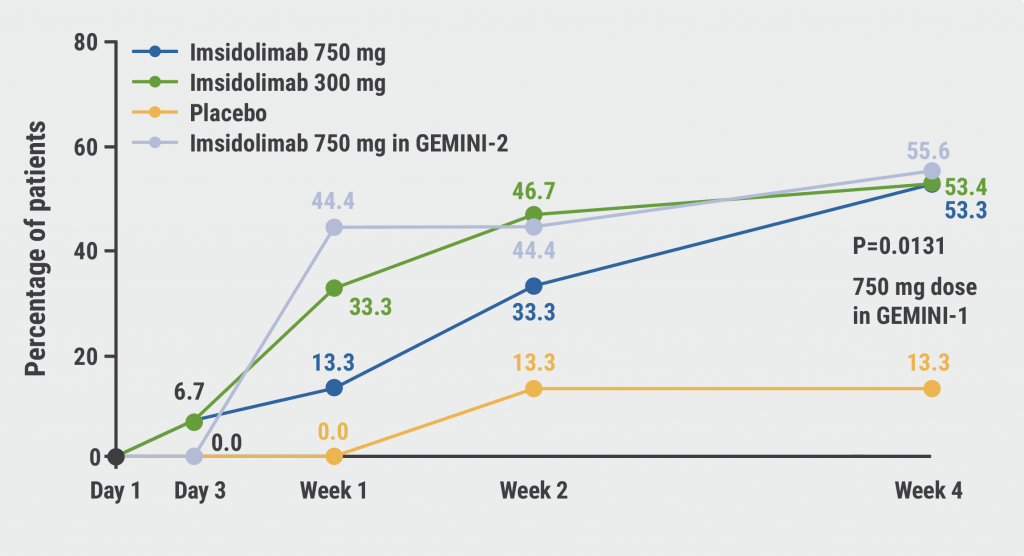https://doi.org/10.55788/c1692288
“In general, we know that women experience more ADRs, and these more often lead to hospitalisation than in men,” Ms Jette van Lint (Pharmacovigilance Centre Lareb, the Netherlands) stated [1]. Around 5% of unplanned hospital admissions are caused by ADRs [2]. Factors contributing to this difference in ADR reporting by men and women may include hormones, pharmacokinetics and pharmacodynamics, besides behavioural variance and social roles [1,3].
“We aimed to investigate differences in nature, frequency, and burden of patient-reported ADRs of biologics,” Ms van Lint explained. The prospective cohort study analysed monitoring data on patients treated with biologics for an immune-mediated inflammatory disease from 9 Dutch hospitals. The most common treatment indications were rheumatic diseases (73%), such as rheumatoid arthritis and psoriatic arthritis. Adalimumab and etanercept accounted for 67% of biologic drugs. Thus, the final study cohort consisted of 748 consecutive patients with a rheumatic disease on adalimumab or etanercept. Among these participants, 59% were women. The mean age of included women and men was 56.6 and 58.2 years, respectively, and 48% of all participants reported at least 1 ADR. As a result, Ms van Lint revealed that a significantly higher proportion of women (55%) reported an ADR compared with 38% of men (P<0.001). The 882 ADRs that were reported were classified into 264 different types, of which 71 were reported by men and women equally. At first, a significant difference in ADR distribution was identified. Ms van Lint further explained that included women reported a higher frequency and a wider variety of injection site reactions, and they more often reported haematoma and cystitis. Yet, after the correction for multiple testing, this statistical significance was no longer present. In terms of ADR burden, a trend towards a higher impact on the male population was observed, but the difference was not statistically significant. Nevertheless, some ADRs stood out, such as pneumonia, which was reported as highly burdensome by both sexes.
“We cannot confirm a causal relationship between the ADR and the biologics. On the one hand, this is a limitation because we cannot be sure that the reported complaints are actually caused by the biologic. Still, on the other hand, this provides insights into the way patients experienced the ADR,” Ms van Lint discussed. “I think, in conclusion, it is very important for clinicians to be aware of these differences,” she highlighted.
- Gosselt H, et al. Sex differences in adverse drug reactions from biological use in patients with immune-mediated inflammatory diseases. FS8, SPIN 2022 Congress, 06–08 July, Paris, France.
- Hendriksen LC, et al. Biol Sex Differ. 2021;12:34.
- De Vries ST, et al. Br J Clin Pharmacol. 2019;85:1507-15.
Copyright ©2022 Medicom Medical Publishers
Posted on
Previous Article
« Conceptual framework of adverse drug reactions may improve treatment of patients with IMIDs Next Article
Children with AD: high risk of bacterial infections in carriers of a filaggrin gene variant »
« Conceptual framework of adverse drug reactions may improve treatment of patients with IMIDs Next Article
Children with AD: high risk of bacterial infections in carriers of a filaggrin gene variant »
Table of Contents: SPIN 2022
Featured articles
Letter from the Editor
IMIDs in Adults and Children: New Developments
Therapies for atopic dermatitis: still moving forward
Children with AD: high risk of bacterial infections in carriers of a filaggrin gene variant
Men on biologics report fewer adverse events than women
Conceptual framework of adverse drug reactions may improve treatment of patients with IMIDs
Psoriasis: The Beat Goes On
Systemic treatment for psoriasis: what is on the horizon?
Topical therapy in psoriasis: an important partner in combination therapy
GPP flares: pronounced undertreatment is common
IL-17A/F inhibitor bimekizumab shows higher response and maintenance rates compared with secukinumab
Paediatric psoriasis: ixekizumab beneficial in difficult-to-treat areas
Psoriasis patients see great benefit in achieving complete skin clearance
The Future Is Bright for Vitiligo
Predilection sites for skin signs of vitiligo disease activity determined
Where Are We Now in Hidradenitis Suppurativa
IHS4 better suited as an outcome measure in HS trials?
New treatments for HS: IL-17 inhibitors next in practice?
New Treatment Options in Alopecia Areata
Alopecia areata: light at the end of the tunnel
Alopecia areata pathogenesis: known genetic background, unknown environmental triggers
Best of the Posters
Psoriasis treatment: no elevation of MACE and VTE on deucravacitinib
Comorbid anxiety and depression may benefit from psoriasis treatment with certolizumab
Dose tapering in psoriasis is associated with a low relapse rate
© 2024 Medicom Medical Publishers. All rights reserved. Terms and Conditions | Privacy Policy
HEAD OFFICE
Laarderhoogtweg 25
1101 EB Amsterdam
The Netherlands
T: +31 85 4012 560
E: publishers@medicom-publishers.com



